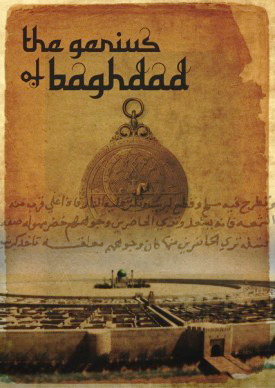Genius of Baghdad
The Genius of Baghdad tells the story of perhaps the most influential city of the Islamic Golden Age. Set during the era of the Abbasid Caliphate, the film centres around the great ‘House of Wisdom’, a corner stone of one of the most influential periods of scientific discovery known to man.
Though initially conceived as a great library by Caliph al-Mansur, ‘The House’, under the watchful eye of Caliph al Ma’mun grew into an unparalleled centre of scholarly excellence, and became a beacon for intellectuals of all faiths and nationalities to study, discuss and learn from each other.
While the west languished in the dark ages, prominent scholars and scientists such as Muhammad ibn Mūsā al-Khwārizmī, Sahl ibn Haroun and Yaqub ibn Ishaq al-Kindi were reimagining the world and building the foundations of modern day science and technology. Drawing on the work of the Greeks, Romans, Indians and Chinese, which had recently been translated for the first time into Arabic, their discoveries have proved fundamental in the disciplines of amongst others, maths, medicine and astrology.
Follow the journey from the building of Baghdad and the great ‘House of Wisdom’; to the construction of the first paper mills; to the nomination of al-Khwarizmi to the post of ‘royal astronomer’ by the Caliph al-Mamun; to the construction of the first hospital in Baghdad, and finally to the eventual fall and destruction of the city at the hands of the Mongols.
A co-production with Paris based Mosaique Films and commissioned by ARTE the Franco-German Broadcaster, this film is due to be completed in 2011.
The Genius of Baghdad – Trailer
Synopsis
In 988, Ibn Al-Nadim from Baghdad wrote a major work entitled ‘The Fihrist’ that tells of the beginning history of the Abbasid Caliphate (since 758) and of the ‘House of Wisdom’. He records all of the books and the body of learning produced there at the time as well as the other great texts that inspired them, notably those of the Greeks and the Indians.
The film begins with this manuscript. Turning the pages of a 3-D “graphic version” of this manuscript, we reveal the scientific discoveries and principal events of this golden age of Arab science. From the pages of this “great book” the beginning of our 2-D graphic sequences (maps and Persian illuminations) and 3-D (drawings and sketches pf Baghdad) will unfold.
The use of a manuscript as a narrative thread expresses the major importance that books have had in the development of scientific knowledge in the Arab world since the 8th century.
Along with the dramatic reconstructions we will see the scientists not only engaged in their discoveries but also in their discussions amongst themselves or with the political leaders of the time. Their conversations whether in Persian or in Arabic will serve to give us a flavour or atmosphere of the times but will not be directly translated.
Historians will provide commentary on the major events that we will stage including: the building of Baghdad; the construction of the first paper mills; the nomination of al-Khwarizmi to the post of ‘royal astronomer’ by the Caliph al-Mamun; the construction of the first hospital in Baghdad; or the making of an astrolabe.
These vivid visually dramatic sequences will also give us a sense of the atmosphere of the social and scientific life of the time, notably at the core of the workshops of the copyists, at the Royal court, the libraries and of course, the House of Wisdom.

